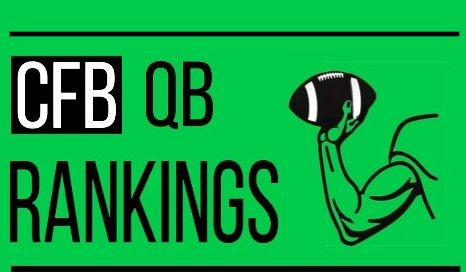🏈 2024 College Football Quarterback Stats & Rankings 📈
Updating schedule-adjusted Points Above Replacement (PAR) for every FBS quarterback this season.
This page contains the college quarterback Points Above Replacement (PAR) metric I use for my “QB U” columns. Read about how it works below, or download the historical data here.
🏈 2024 College Football QB rankings 📈
👀 How it works
This metric builds off of the QB value stat that my colleague Maya Sweedler and I used here to rank BYU against other prolific passing programs from CFB history. I introduced it in this story about recent QB factories, and expanded on it more in this story about the most productive returning QBs of the 2024 season.
Here are the steps to calculating PAR:
Calculate raw Points Above Average (PAA) via the following formula:
PAA = Coef*(Pass Att + Rush Att)+0.408314*Completions+0.028618*Pass Yds+0.791174*Pass TDs-1.265725*INTs+0.069731*Rush Yds+1.387276*Rush TDs
(These coefficients are based on a regression between standard box score QB stats and ESPN’s QBR-based value metrics.)As part of this, find the value for “Coef” (the multiplier on QB passing and rushing attempts) that makes the sum of all PAA across FBS QBs in a given season equal zero. (The coefficient was -0.4253 in the 2023 season.)
Convert from raw PAA to raw Points Above Replacement (PAR) by adding 0.11334025*(Pass Att+Rush Att)
Determine each QB’s share of team plays — i.e., his % of the team’s (Pass Att+Rush Att) by QBs.
Calculate the schedule adjustment.
For complete seasons, this is done by grabbing the team’s “SOS” value from Sports-Reference/CFB’s Simple Rating System (SRS) scores, and extracting the passing-specific portion of that by multiplying by 25% (the the share of overall team Expected Points Added that is attributable to passing offense in CFB since 2005).1 Then, that number is multiplied by the QB’s share of team plays and the team’s total number of games to date, to arrive at the total SOS adjustment.
During the season, using actual observed SRS values early will inflate the SOS adjustments, so we taper the use of those against SOS estimates based on a prior for the opponent’s SRS, using a 3-year weighted average of their SRS from previous seasons. The blend follows this process:
The SOS adjustment value (in points) is then added to raw PAA and PAR to obtain the schedule-adjusted versions. PAR/13 represents a QB’s prorated value per 13 team games, similar to WAR per 162 team games in my baseball JEFFBAGWELL leaderboard.
Filed under: College Football, QB U
A future iteration may look specifically at the opponent’s pass defense (or general defense), but for now the entire team’s SOS is used.






Is there a way to make an Elo ranking/ predictor for CFB?